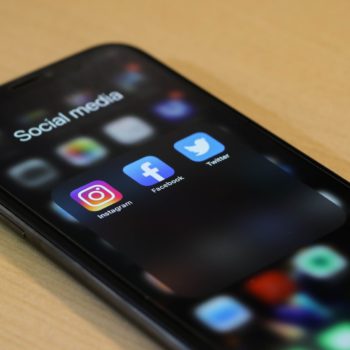Almost a decade ago, when I first read Dan Brown’s novels, my mind was instantly intrigued and fascinated at how symbols are capable of holding such deeper meanings. They build perceptions and make significant impacts. Dan’s novels revolve around mystery and thrill, where facts and fiction are intertwined to create an amazing edge of the seat composition. Most of his tales uncover hidden meanings behind ancient symbols.
Symbols representing various cultures, civilizations, brotherhoods and brands have always surrounded us since ages. The modern-day logos and brand representations are indeed symbols with interesting meanings and stories behind them. A logo is a brand’s identity, its image and memory. The impact a good logo has on consumers is often underrated and probably not emphasized enough.
A logo represents a brand’s ideology and defines its personality. It stays with your consumers in the form of a memory, a relatable experience and as a promising association. Representing your work as a visual illuminates your idea to life and is proven to be a communicating tool better than words can ever describe.
When you think about McDonald’s, the famous McDonald’s Logo – a yellow “M” on a red background, does it not appear in your mind? Or Apple’s very famous logo – the bitten apple – rings a bell? All these experiences emphasize the importance and relevance of a logo.
Let us explore some facts that shed light on why is it necessary for brands to have a logo:
Customer reckoning –

As a business, you thrive to grab customer’s attention – to make sure that your business does not lose out on the potential customer base. A logo is a visual representation of your business. Its competency and ethics and is often the first thing your audience expects to see in all your communication. A logo is expected to be distinguishably visible in various marketing tools such as advertisements, business cards and brochures.
In the absence of a logo, who knows, you might lose out on an opportunity to create a significant impact in people’s mind.
Strong first impression

A logo would generally be the first noticeable thing about your business. The main purpose of a logo is to provide a visual identity to your business. We live in a fast-paced environment and consumers have short attention spans. When someone looks at your logo, they form an opinion within seconds. That opinion drives their willingness to consider your products. That is why it is essential to communicate your brand’s identity through a logo. If done the right way, the limited attention span of consumers can turn beneficial for your business. While on the other hand, you might miss out on potential customers if your logo fails to grab their observation.
Reflection of your brand ideology

Your logo endorses your brand’s story and that influences customer emotions. This is a part of successful branding. The logo sets the stage for your brand’s story to uncover. The colours, fonts, representations, literally every aspect of your logo encompass the struggle behind your story. This reflection of your brand helps to build a loyal customer base too.
The Disney logo is a perfect example – It’s a representation of a magical castle along with a palette of bright colours. This symbolizes the magic of the fairy tale realm. It is appropriate since the company has and continues to produce fairy-tale and fantasy-oriented animated movies for kids. Looking at the logo, a lot of us go down the memory lane as we have a lot of cherished childhood memories attached to it.
Prevailing over competitors

A logo represents the identity of your business and also the unique characteristics that help you stand out from your competitors. There may be dozens of pet grooming services in town, but yours is the one who genuinely believes that all pets are family. An appropriate logo would successfully pass on that message to potential customers, making them choose you over others with similar services. Creation of an appropriate logo is the right opportunity for you to communicate how you stand and operate differently from your counterparts. Let these visual representations do the talking and the results might amaze you.
Go Global!

Karl Lagerfeld, the creative brain behind Chanel’s modern revival, once quoted – “Logos and branding are so important. In a big part of the world, people cannot read French or English but are great in remembering signs”. That is the ideology of a global entrepreneur. To make your brand recognizable in different countries, cultures and geographies, your logo play a very important role. It becomes the key feature of your recognition among people from different backgrounds. Indeed, people around the globe do not speak a common language and that is where a logo helps them relate themselves to your brand. Humans are programmed to remember images more than words which make them recall your brand easier if there is a logo in the picture. People can forget your name or your tagline. A logo might still be the memory they hold on to.
The omnipresent approach

It is a proven fact that visual stimulation attracts our attention. That’s just how our brains are wired. We are capable of processing images 60,000 times faster than text which allows information to be retained faster and more efficiently. Your logo can prove to be an extremely useful and consistent advertisement tool since it can be put onto your packaging, products, business cards, flyers etc. It can be visible on your store walls, on social media platforms and every other relevant place where it is because of customers. It represents your presence in those places and thus communicating your brand’s vision to people.
Building trust and transmitting professionalism

When building a new business, it takes time and effort to develop trust in your customers & associates. But from day one, its foundation starts building. How you represent yourself as a brand matters the most at this stage. The way you project your brand through visual tools such as a logo is how people will perceive it. A poorly designed website would certainly fail to persuade people to buy from them. Because consumers will not be able to develop the trust and authenticity they look for during an online purchase.
Having a logo also depicts your professionalism. It shows how serious you are involved and committed to your business. This makes consumers take a chance with you, even if you are new in the field. Amidst new beginnings, when a brand faces multiple challenges, a logo can contribute in its subtle ways. It helps you gain the trust and recognition of consumers.
The emotional quotient

How does visualize famous logos feel? It taps into a corner of our brain, giving way to nostalgia. Yes, that is how we are emotionally connected to our favourite brands. According to research, it is proven that 90% of all consumers make purchase-related decisions based on the product’s appearance. For obvious reasons, this includes its logo design and colour scheme. This makes it important for a brand to choose a logo that is capable of drawing consumers’ attention and making an emotional connect. Connections make it unlikely for people to forget your brand. Hence, creating a loyal customer base.
While it is essential to have a logo for different reasons, and inappropriately created logo can ruin your brand’s image significantly. Therefore, I would further be discussing a few things that need to be kept in mind while designing an effective logo.
Do your homework

Before finalizing a logo, ensure that you have done an in-depth analysis about what your logo is going to represent. What would be the brand’s ideology and how it would be reflecting through your logo. The logo should represent your brand’s ethics, ideas and goals. Your logo would hold the responsibility of creating the right image in your consumer’s eyes. Thus, it is necessary to consider this fact.
Ditch the trend

On one hand, it isn’t wrong to be aware of the latest trends that other brands are following currently concerning logo designing, yet it is crucial to understand that blindly following trends makes your logo expose to the risk of becoming out-dated shortly. This is because trends are meant to change. Instead, you can create a timeless logo for your brand by doing a careful analysis coupled with imaginative thinking. Something which is unique to your business and relatable to consumers.
The unconventional approach

Your logo must indeed tap into customers’ memories, yet be able to depict your brand values. But that doesn’t mean it has to be boring or conventional in its approach. A little out of the box thinking never hurt. Try to experiment with designs, fonts, colours or styles until you find a perfect amalgamation of these elements to represent your business. Embedding hidden meanings related to your brand’s story in your logo design is a great example of such an innovative approach. For instance – The logo of famous automobile company Toyota includes all the alphabets in its name – T-O-Y-O-T-A.
Minimalism is the key

Creating a unique logo does not mean it has to be complex. It is simply not a good idea to cram a bunch of elements together for the sake of creating something unique or trying too hard to tell a story. Complexity confuses people and inhibits them to form a connection. The key is to keep the design as minimalistic as possible. Remove content or elements that clutter your design. Anything too distracting or visually cluttered has to go off the shelf. This can be achieved by choosing one colour in multiple colours.Usage of a clean & single font, usage of negative space or removing redundant features of the design. The logo for Apple is a perfect example of minimalism and class.
Know your colour palette

Finalizing the perfect colour for your logo can be a tedious task. Colours have different meanings and representations. It may also vary as per cultures, geographies and backgrounds which make it even harder to shortlist anyone. Try looking at the logo in different hues to analyse which colours are more impactful than the others. Experiment with various shades and tones to find your perfect blend. Sometimes, a logo might look more powerful in just black and white than in any other colour. If this approach works for your design, do consider that. However, make sure that the colours & their meanings positively represent your brand’s image. They must not contradict with the brand’s vision.
For an in-depth study on how colours impact a business, do refer to https://de-sant.com/colour-psychology-in-brand-marketing/
Platform friendly designs

A company’s logo is usually imprinted on various objects and surfaces including business cards, flyers, social media platforms, websites or mobile apps, billboards, walls, t-shirts, mugs and whatnot. Before finalizing on the design, it is important to run tests to determine how it would look on different mediums and surfaces. Sometimes a logo may look good on paper but doesn’t quite look noticeable on a wall. This approach will help envision the logo image in the real world. Your logo must maintain a clear and distinctive image even if it is stretched or compressed. Application of certain digital tools can help overcome this problem rather easily.
Logos have a way of evolving. Their meanings and relevance may change as they grow stronger and more relatable to consumers. So, there must always be scope for change. A dynamic approach can always be beneficial.
Conclusion: Running a business can be overwhelming. The pressure to succeed in an environment where we face cut-throat competition on almost a daily basis is evident. There is no choice when it comes to striving for the best. Yet, in this era, brands can grow and create their niche. Thanks to digital platforms and ease of knowledge & resources. It is our constant endeavour to provide the best available information that would help your brand find the right direction and support.







